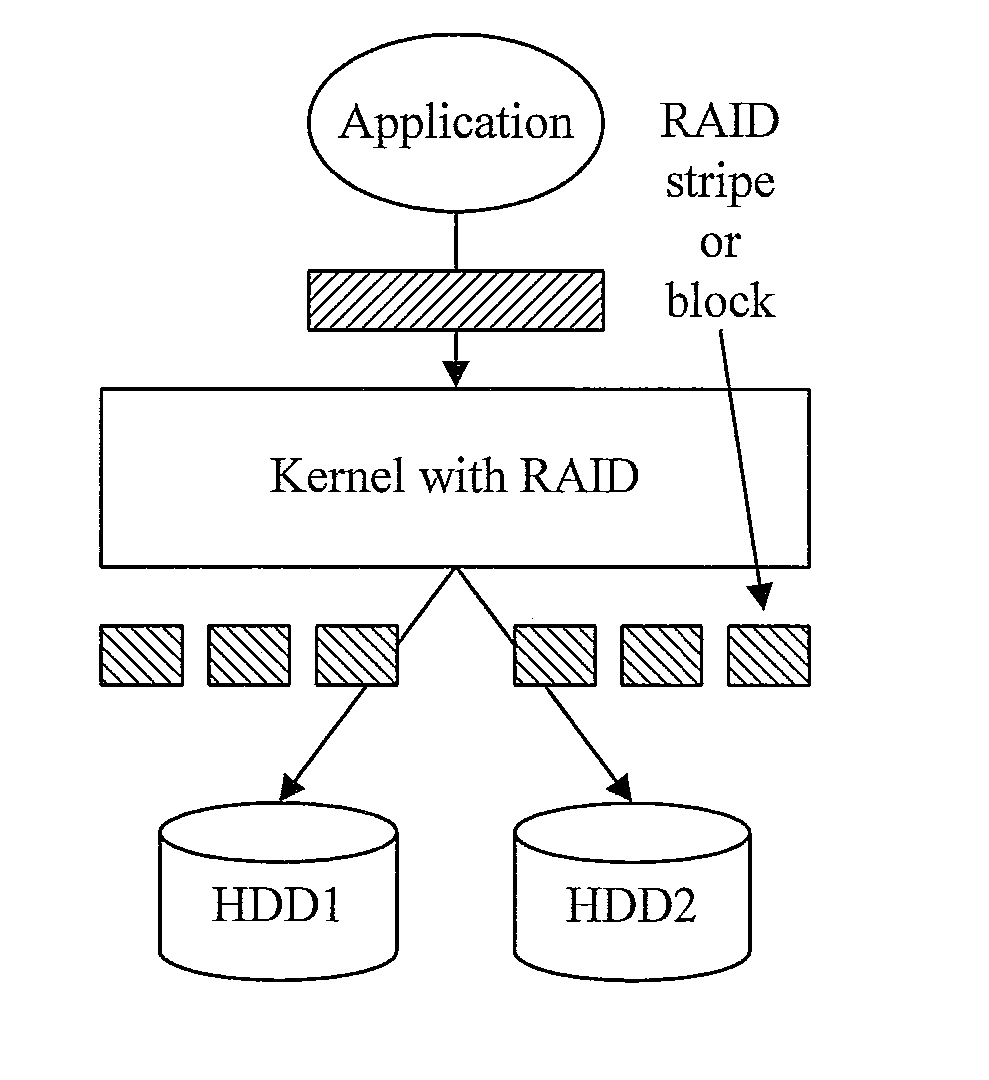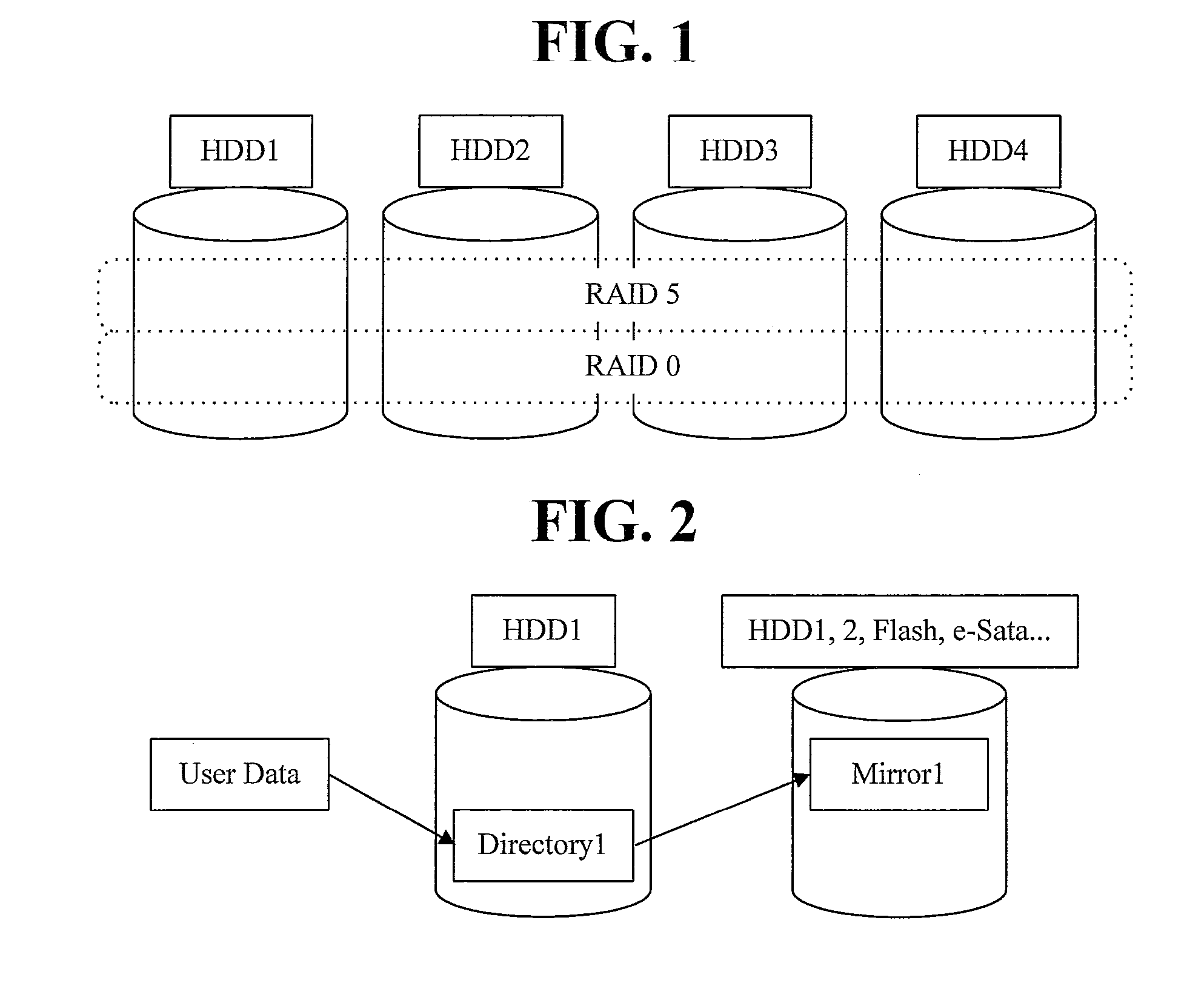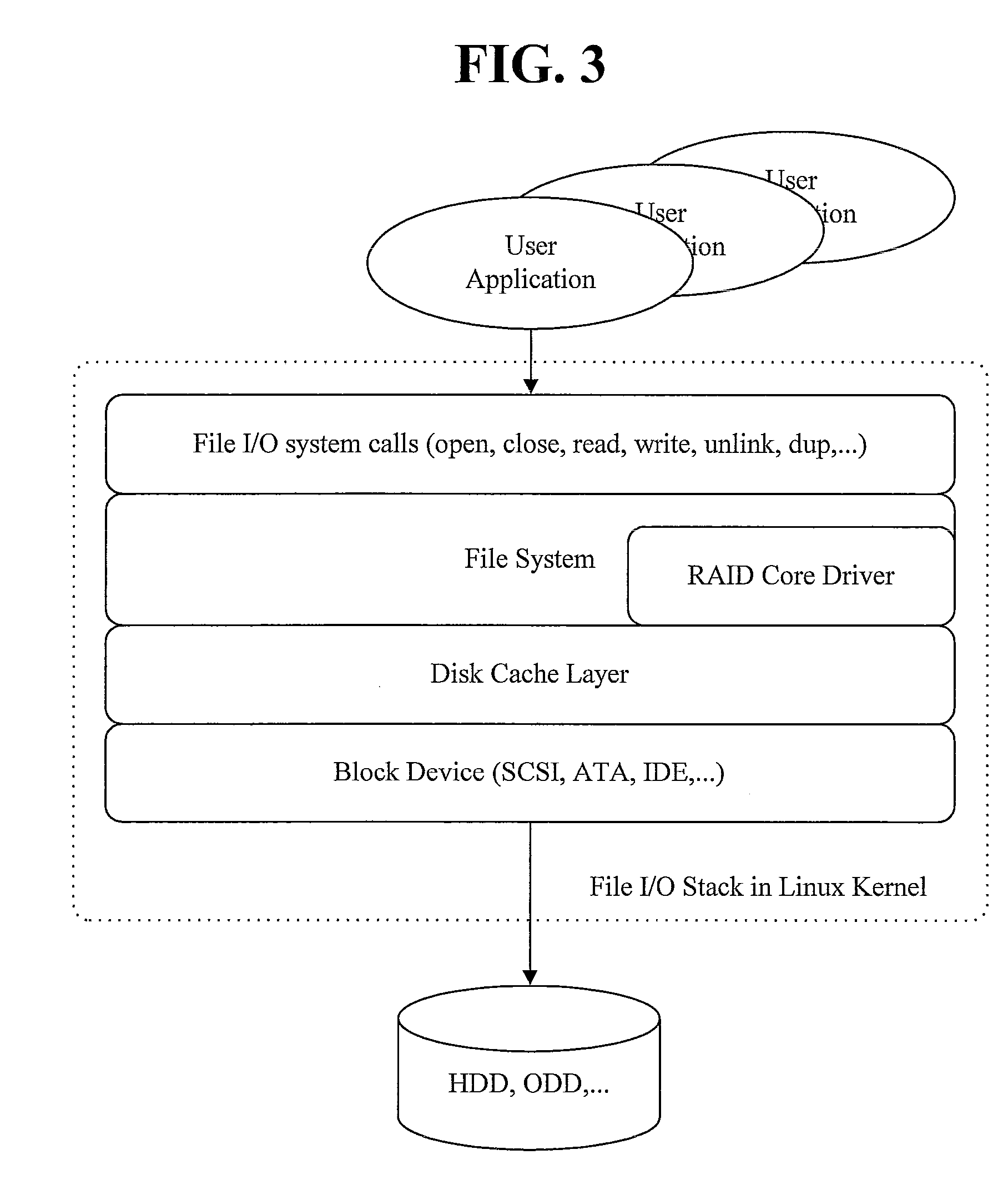Selective mirroring method
a mirroring method and selective technology, applied in the field of selective mirroring method, can solve the problems of difficult for a user to freely alter the size of storage or raid method, difficulty in freely changing the size of raid, and high cost of reconfiguration of raid, so as to improve the user's convenience and data stability of the nas system
- Summary
- Abstract
- Description
- Claims
- Application Information
AI Technical Summary
Benefits of technology
Problems solved by technology
Method used
Image
Examples
Embodiment Construction
[0036]A selective mirroring method according to exemplary embodiments of the present invention will now be described in detail with reference to the accompanying drawings.
[0037]The selective mirroring method according to an exemplary embodiment of the present invention is applied by the directory or file, including a folder, as a basic unit, can be applicable to a plurality of directories or a plurality of files, and maintains one or more duplicates of the single original.
[0038]In an embodiment of the present invention, a read / write function, similar to a redundant array of inexpensive disks (RAID) function, can be performed, and also a mirroring function for redundantly storing one or more data can be performed to prevent a data loss when equipment such as network attached storage (NAS) system or the like is broken down.
[0039]For example, as shown in FIG. 2, when the user data is recorded in a first directory 1 (or directory1) of a first hard disk (or HDD1), the user data is redund...
PUM
 Login to View More
Login to View More Abstract
Description
Claims
Application Information
 Login to View More
Login to View More - R&D
- Intellectual Property
- Life Sciences
- Materials
- Tech Scout
- Unparalleled Data Quality
- Higher Quality Content
- 60% Fewer Hallucinations
Browse by: Latest US Patents, China's latest patents, Technical Efficacy Thesaurus, Application Domain, Technology Topic, Popular Technical Reports.
© 2025 PatSnap. All rights reserved.Legal|Privacy policy|Modern Slavery Act Transparency Statement|Sitemap|About US| Contact US: help@patsnap.com



